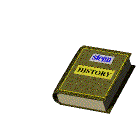Japan's Literary and Dramatic Developments
During the 800s was a time of literature, with their diaries, essays, and novels still read today.
Writing Systems
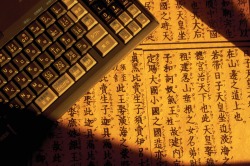
Japan used the Chinese writing system. Around the year 400, Japanese words were written with Chinese characters. Specific objects, actions, ideas, and later sounds were represented by Japanese characters, just like China's words. These were just like syllables and letters from English. Writing today uses letters and characters, creating a language similar to that of Korea's.
Drama
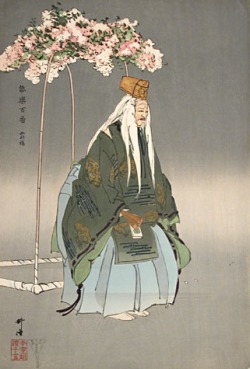
Drama is an old tradition started in the 600s, originating as Shinto shrine dances. In the 1300s, a unique type developed, noh, which were often remade legends and folk-tales. The picture (left) shows a scene from a noh play. Stories were "told" by painted emotion masks and actors' gestures, costumes, and music. Men made up most of the actors and they played for the upper and common class.
By the early 1600s, Kabuki came to be. It mixes dancing and melodramatic singing with decorative outfits and makeup. Kabuki is informal with commoners as characters and all men actors.
Both are common today.
By the early 1600s, Kabuki came to be. It mixes dancing and melodramatic singing with decorative outfits and makeup. Kabuki is informal with commoners as characters and all men actors.
Both are common today.
Many Tales
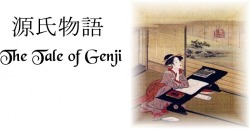
The 800s was the end of Japan's diplomatic behaviors with China as some felt educated enough. While Chinese ideas were still powerful, the Japanese made their own culture and traditions, especially in literature. Lady Murasaki Shikibu wrote The Tale of Gengi in the early 1000s, and became a number one writer. The Tale of Gengi was in a palace about a prince's life in the emperor's court. All books before had just retold myths, but this story was long and based on one real life, so it was the "1st important novel in the world". Common subjects of poems were sadness from unrequited love and nature's beauty. Short poems were some of the most popular. One example is the haiku, a short poem of 17 syllables and three lines split into 5, 7, and 5 syllables. Matsuo Basho (1600s) was a haiku master and made quiet, thoughtful Zen poems. The one below is about a pond.
"An old silent pond...
Into the pond a frog jumps,
Splash! Silence again."
"An old silent pond...
Into the pond a frog jumps,
Splash! Silence again."
Haiku
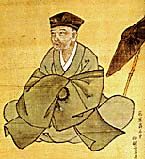
Oh! The full moon's light!
Round and round my pond I strolled
All the moon-bright night.
The wintry wind blows
The blueness of its sharp breath
Chilling the Earth's bones.
- Basho (1644-94)
Basho means "banana tree". It was a nickname for Matsuo Munefusa since he was a child, because his small hut had a banana tree by it. Born of a family both rich and noble, he refused his chosen life so he could learn philosophy, write poetry, and teach others. His message was: "'Do not follow in the footsteps of old masters; seek what they sought.'" (http://www.storyboardtoys.com/gallery/Jennifer.htm). Today, he is called "the first and greatest poet in Japan's long tradition of haiku poetry" (http://www.storyboardtoys.com/gallery/Jennifer.htm).
"Haiku is a type of Japanese poetry. Haiku are short poems that usually describe nature and a fleeting moment in time; they often contains a reference to a season of the year (called kigo)" (Enchanted Learning).
Round and round my pond I strolled
All the moon-bright night.
The wintry wind blows
The blueness of its sharp breath
Chilling the Earth's bones.
- Basho (1644-94)
Basho means "banana tree". It was a nickname for Matsuo Munefusa since he was a child, because his small hut had a banana tree by it. Born of a family both rich and noble, he refused his chosen life so he could learn philosophy, write poetry, and teach others. His message was: "'Do not follow in the footsteps of old masters; seek what they sought.'" (http://www.storyboardtoys.com/gallery/Jennifer.htm). Today, he is called "the first and greatest poet in Japan's long tradition of haiku poetry" (http://www.storyboardtoys.com/gallery/Jennifer.htm).
"Haiku is a type of Japanese poetry. Haiku are short poems that usually describe nature and a fleeting moment in time; they often contains a reference to a season of the year (called kigo)" (Enchanted Learning).
